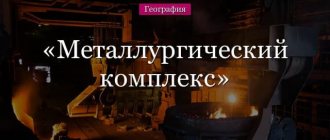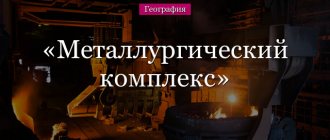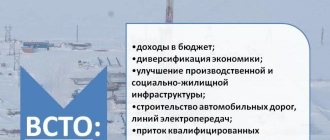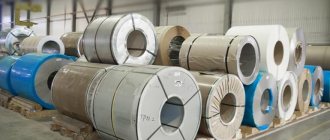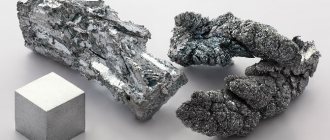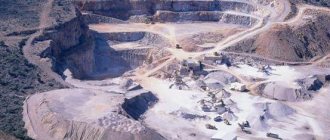Metallurgy is one of the branches of the heavy industrial sector. The enterprises not only mine and enrich ore, but also smelt various metals and alloys. This direction requires a large amount of raw materials. The disadvantage of smelting and manufacturing products is the large amount of emissions into the atmosphere and the environment. The production process is complex and consists of several stages.
Metallurgy includes two areas - the production of ferrous and non-ferrous metals. About ninety percent are ferrous metals: steel, rolled products, cast iron, scrap. They are used in the manufacture of many designs. Ferrous metallurgy is the largest sector in the world and plays an important role in the global economy. Iron occupies a leading position among other metals. This is the main material used to create structures.
General characteristics and specifics of the industry
If we compare ferrous and non-ferrous metallurgy, the latter is more energy-intensive. It is characterized by complex production processes, since the ore content of the required element is usually low. It also often contains a large number of impurities. For example, copper ore contains a maximum of 5% copper. Pyrites are mined in the Urals. These are multicomponent ores, which contain about 30 chemical elements.
Non-ferrous metals are divided into several groups:
| Category | Peculiarities | Name of metals |
| Heavy | Dense and heavy | Copper, nickel, zinc, plumbum |
| Lungs | Low specific density and weight | Aluminum, lithium, titanium |
| Small | They are companions of heavy metals | Cobalt, antimony, mercury, cadmium |
| Alloying | Used for the production of steel and other alloys | Molybdenum, tungsten, vanadium |
| Noble | Used in microelectronics and for making jewelry | Gold, silver, platinum |
| Rare earth | May have different properties | Tantalum, niobium, yttrium, etc. |
Non-ferrous metal ores contain little extractable element, so to obtain a ton of copper it is necessary to process about 100 tons of rock. Most often, production complexes are located near the raw material base.
Also, processing ore requires a large amount of electricity. Energy costs account for about 50% of all production costs.
Non-ferrous metallurgy is divided into industries based on the type of element being mined. The largest production volumes come from the following metals:
- Copper.
- Aluminum.
- Cobalt and nickel.
- Tin.
- Lead and zinc.
- Gold.
Nickel production is associated with nickel ore mining sites. The main deposits are located in the Norilsk region of Siberia and on the Kola Peninsula. Most branches of metallurgy are characterized by multi-stage production stages. During waste disposal, other materials are obtained. They are then used in the mechanical engineering, construction and chemical industries.
History of development
Humanity has been smelting metals for many centuries. This is confirmed by multiple archaeological finds. To a greater extent in Russia, the development of mining and the production of non-ferrous metals is associated with the name of Peter I. It was thanks to his orders that the first smelters were built in the Urals.
By the beginning of the 20th century, Russia had become one of the world leaders in the metal production industry, but the First World War stopped the development of the industry for a long time. Although already in the 30s, when the first five-year plans appeared, the state recovered and was able to strengthen its industrial power. After the Great Patriotic War, the construction of the largest metallurgical plants began. Most of them are still working.
Geography of non-ferrous metallurgy
The geography of the industry is very large. The richest deposits are located in Australia, Peru, Venezuela, India, Chile, South Africa and Guinea. To increase production efficiency, most states cooperate with each other.
The leading place in the world non-ferrous metallurgy is occupied by the development of deposits of aluminum-containing ores. Most of the reserves of this metal are located in the equatorial zone. But successful aluminum production can only be established in those countries that have sources of relatively cheap energy:
- Russia, Norway, the USA and Canada have powerful hydroelectric power plants and large hydrological resources.
- Iraq, the UAE, the Netherlands and the UK have natural gas reserves.
- China, Australia and India have a lot of coal.
In France, Hungary and Austria, energy is expensive, so aluminum production is gradually decreasing in these countries.
The geography of the industry is also influenced by environmental factors, since the production of metals greatly harms the environment. It pollutes surface and underground waters, the atmosphere and soil. For example, during production, sulfur dioxide is released, which then falls in huge quantities in the form of acid rain on the surface of the Earth. In this case, all living things suffer.
Ferrous metallurgy
Ferrous metallurgy. Significance Types of enterprises and features of their location Significance of ferrous metallurgy Characteristics of the Central metallurgical base Export opportunities and domestic market Main trends in the development of ferrous metallurgy
The importance of ferrous metallurgy Ferrous metallurgy primarily serves as the basis for the development of mechanical engineering and metalworking. Ferrous metallurgy products are used in almost all areas of the modern economy. This branch of heavy industry covers such stages of the technological process as mining, beneficiation and agglomeration of ferrous metal ores, production of refractories, extraction of non-metallic raw materials for ferrous metallurgy, coking of coal, production of cast iron, steel, rolled products, ferroalloys, secondary processing of ferrous metals, extraction of auxiliary materials , production of metal products for industrial purposes, etc. But the basis of ferrous metallurgy is the production of cast iron, steel and rolled products. The Russian Federation occupies one of the leading places in the world in the extraction of iron ore, iron smelting, and coke production. The largest consumers of ferrous metallurgy products are mechanical engineering and metalworking, the construction industry, and railway transport. Ferrous metallurgy is closely connected with the chemical and light industries. Types of enterprises and features of their location In the structure of ferrous metallurgy, full-cycle metallurgy is distinguished, producing cast iron - steel - rolled products. In addition to the main production, it includes the preparation of iron ore for smelting (beneficiation, which aims to increase the iron content in the ore by removing waste rock, and roasting the ore in special furnaces to remove carbon dioxide, sulfur, and phosphorus). For the production of cast iron, in addition to the preparation of iron ore, process fuel, fluxes, refractory materials, water and alloying metals (manganese, chromium, molybdenum, titanium, vanadium, etc.) are required, which impart certain high-quality properties to the metal. Process fuel is most often coke, as well as gas. For the production of coke, only high-quality coking coal, high-calorie, low-ash, low-sulfur and high-strength, can be used. In the placement of full-cycle metallurgy enterprises, a particularly important role is played by raw materials and fuel, which account for up to 90% of all costs for smelting cast iron, of which approximately 50% are for coke, 40% for iron ore. For 1 ton of cast iron, 1.2–1.5 tons of coal, at least 1.5 tons of iron ore, over 0.5 tons of fluxing limestone and up to 30 m3 of recycled water are consumed. All this indicates the importance of the relative location of raw materials and fuel resources, water supply, and auxiliary materials. The role of iron ores and coking coals is especially important. Ferrous metallurgy with a full technological cycle gravitates to sources of raw materials (Ural, Center), to fuel bases (Kuzbass) or to points in between (Cherepovets). Incomplete cycle enterprises produce cast iron or steel or rolled products. Enterprises that produce steel without pig iron are called conversion enterprises. This group also includes pipe rolling plants. Particle metallurgy focuses mainly on sources of secondary raw materials (waste from metallurgical production, waste from consumed rolled products, depreciation scrap) and on the consumer of finished products, i.e. for mechanical engineering. In this case, both the source of raw materials and the consumer are represented as a single person, since the largest amount of metal scrap accumulates in areas of developed mechanical engineering. A special group based on technical and economic characteristics consists of enterprises producing ferroalloys and electric steels. Ferroalloys are alloys of iron with alloying metals (manganese, chromium, tungsten, silicon, etc.). Their main types are ferrosilicon and ferrochrome. Without ferroalloys, the development of high-quality metallurgy is unthinkable. They are produced in blast furnaces or electrometallurgically. In the first case, the production of ferroalloys is carried out at full-cycle metallurgical plants, as well as with two (cast iron - steel) or one (cast iron) processing (Chusovoy), in the second - their production is represented by specialized plants. Electrometallurgy of ferroalloys, due to high energy consumption (up to 9 thousand kWh per 1 ton of product), finds optimal conditions in those areas where cheap energy is combined with alloying metal resources (Chelyabinsk). The production of electric steel is developed in areas that have the necessary sources of energy and scrap metal. Low-capacity metallurgical plants - mini-plants - are becoming increasingly important due to the huge scrap metal resources available in the country and the needs of modern mechanical engineering for high-quality metal of certain and different grades, but in small quantities. Such plants can provide rapid smelting of metal of the required grade and in fairly limited quantities for machine-building enterprises. They are able to quickly respond to changes in market conditions and best satisfy consumer needs. The high quality of steel produced at mini-mills is ensured by the most advanced melting method - electric arc. “Small” metallurgy - metallurgical workshops as part of machine-building plants. They are naturally consumer-oriented, as they are an integral part of a machine-building enterprise. The traditional method of producing steel: first, the semi-product - cast iron - is produced from ore in blast furnaces, and then steel is produced in steel-smelting units - converters, open-hearth furnaces, electric furnaces. A new direction of scientific and technological progress in the industry is blast-furnace, or coke-free, metallurgy. In Russia, such an enterprise was built in Stary Oskol (Belgorod region) - Oskol Electrometallurgical Plant. This technology differs in principle from the traditional process, in which the ore is first smelted at a temperature of 1600°C along with coke, which serves as a chemical reducing agent. Here, blast furnace smelting is replaced by a much easier to manage and maintain process of metallization of pellets (pellets are lumps obtained from iron ore concentrate). A reducing gas, for example, a mixture of hydrogen and carbon monoxide obtained from natural gas, is passed through the pellets at a temperature of almost 1000° C. This gas easily takes oxygen away from the iron, and the pellets contain quite a lot of oxygen. Metallized pellets are formed, consisting almost entirely of iron, i.e. direct reduction of iron occurs. At the next stage, metallized pellets are converted into high-quality steel in powerful electric arc furnaces. This production method has enormous advantages in the form of coke savings, high quality metal, and environmental friendliness. Coking coal is becoming scarcer and more expensive every year; the coking process is complex and labor-intensive, accompanied by the release of harmful by-products, i.e. requires additional costs for the construction of treatment facilities. The high quality of the metal is due to its purity from sulfur and phosphorus and other unwanted impurities that enter the steel from cast iron, which in turn inherits them from coke. Metallization plants are practically harmless to the environment, unlike blast furnaces and coke ovens. Such steel lasts on average five times longer. The disadvantages of blast-furnace ferrous metallurgy include high energy costs, the use of only high-quality ores with an iron content of more than 60%; higher cost of metal. In countries where coking coal reserves are high, as in Russia, blast furnace ferrous metallurgy will continue to be of great importance for a long time. Powder metallurgy (cermets) is developing. Powdered steel is smelted in an induction furnace, the melt is sprayed with high-purity nitrogen and fills metal capsules with powder. This steel has almost 100% density and a high level of technological plasticity. It allows you to glue parts from the smallest particles and thereby reduce waste to almost zero. In addition, this technology makes it possible to recycle waste from other technologies, such as metal shavings, and makes it possible to produce metal products of any configuration, to combine metals that cannot be fused using conventional technology, i.e. obtain metals with desired properties. Disadvantages: the difficulty of obtaining powders that are pure in chemical composition and their relatively high cost. In Russia, the structure of steel production has improved over the past 10 years. Although, of course, this is not due to the introduction of scientific and technological progress in the industry, but to the closure of many old uncompetitive and unprofitable enterprises.
Characteristics of the Central Metallurgical Base Metallurgical base is a group of metallurgical enterprises that use common ore and fuel resources and meet the main needs of the country's economy in metal. The central base of ferrous metallurgy is located on the territory of the Central, Central Chernozem and Volga-Vyatka economic regions. Here, in the Central Economic Region, is the largest iron ore region in Russia, providing 45% of all-Russian iron ore production. The bulk of the ore is mined in quarries in the Belgorod and Kursk regions, but the most valuable ores with high iron content lie in deeper horizons and are mined in underground mines. The scale of development of metallurgical processing in the Central Base is noticeably more modest than in the Urals (22% of cast iron, 16% of steel, 17% of finished rolled products and 15% of all-Russian pipes). Most of the iron and steel of the Central Base is produced at one of the largest and technologically modern Novolipetsk Iron and Steel Works in the country. In Stary Oskol there is the only metallurgical plant in Russia built using German technology, where iron is produced from iron ore concentrate by chemical reduction, and then electric steel, bypassing the stage of pig iron production. This progressive method of metallurgical processing does not require coke and has low water consumption standards, which is extremely important in the Central Black Earth economic region, which suffers from a shortage of fresh water and does not have its own fuel resources. Among other metallurgical processing enterprises, the Kosogorsky iron foundry and Novotulsky metallurgical plants, as well as a steel foundry in the city of the same name in the Moscow region, stand out. There is a large steel rolling plant in the city of Orel. The Kulebak, Vyksa and Omutninsky plants of the Volga-Vyatka economic region, which specialize in the production of high-quality special steels for mechanical engineering, are noticeably inferior to them in capacity. Small metallurgy - the production of ferrous metals and their alloys, as well as the production of rolled products in the metallurgical shops of machine-building plants in the Center and the Volga-Vyatka region - has received great development in the Central Ferrous Metallurgy Base. The main advantage of the Central Ferrous Metallurgy Base is its location on the territory of the country's largest iron ore basin and in close proximity to machine-building centers and other consumers of ferrous metals. The main disadvantages of the Central Base are the lack of coking coal, a tense fuel and energy balance and water shortages. The most promising directions for the further development of the Central Base of Ferrous Metallurgy is the acceleration of the iron ore industry both in order to more fully cover domestic needs for its products and to expand export supplies, as well as increasing the capacity of the metallurgical processing plant based on the advanced technology of the Staro-Oskol Metallurgical Plant and the development of small metallurgy.
Export opportunities and domestic market During 2000, the growth of domestic consumption of ferrous metallurgy products, which amounted to 180%, determined the development trend of the industry. Export growth amounted to 17%. In general, the industry is characterized by a predominance of the share of exports compared to domestic consumption in total output (Appendix 2). This is related to such features of the industry as the dependence of the total output on the volume of exports; dependence on the trade policies of importing countries; the need for government support measures; the presence of competition between producers from the CIS countries, which becomes most intense when export opportunities are reduced. The dependence of the industry's output on export opportunities results in the fact that with a reduction in exports, the investment activity of enterprises is reduced, and therefore the possibility of further development. The volume of possible export supplies depends on the results of anti-dumping investigations carried out by importing states. Many recent anti-dumping investigations have resulted in significant reductions in supplies. In such conditions, the dependence of output on domestic demand increases, and this determines the main structural shift in the sales policy pursued by enterprises in the industry. The main increase in the domestic market comes from enterprises in such industries as construction, mechanical engineering and metalworking. In the context of a reduction in export opportunities as a result of the quota policy pursued by importing states, the introduction of high duties and other measures that impede the import of ferrous metallurgy products from the CIS countries, enterprises in the industry in the CIS countries are faced with the problem of increased competition, which significantly worsens their situation. To resolve the situation, the Council of Producers and Exporters of Ferrous Metals of the CIS States was created. The Council includes the largest producers and exporters of rolled metal from Russia, Ukraine, Moldova and Belarus. Within the framework of the Council, quarterly meetings of participating enterprises are held.
Main trends in the development of ferrous metallurgy In connection with the tendency to reduce steel consumption per unit of production, with the displacement of ferrous metals by aluminum and plastics, and with resource conservation, the need for metal is decreasing. The era of pure, economically alloyed steels with a high tensile strength of structures is coming. Products made from them are characterized by low metal consumption and durability. In the future, only high-quality metal with special properties will be needed, so the following areas of development are relevant for the industry.
The transition from “mass” to high-quality metallurgy, an increase in the share of high-quality steels and complex types of rolled products in the product structure. In this regard, the specialization of metallurgical plants will increase, and cooperation ties will increase. Specialized production will receive new development - transport metal (rails, wheels, fasteners), construction metal, metals for cars, electronics industry, etc. Development should proceed through modernization using the latest technologies, diversification of production at a number of metallurgical enterprises, the traditional products of which turn out to be uncompetitive. The basic metallurgical enterprises will remain Cherepovets, Novolipetsk, Magnitogorsk, Nizhny Tagil, Chelyabinsk, West Siberian, Kuznetsk, Novotroitsk, as well as pipe plants. The share of pigment metallurgy should increase significantly, since it produces cheaper metal. Now 1/2 of steel is smelted from scrap metal. In this regard, the construction of mini-factories is promising (they use scrap, they are equipped with electric arc furnaces, produce high-quality metal, narrow specialization is possible, fulfillment of small orders, consumer-oriented).
Changes in the location of ferrous metallurgy have the following promising trends.
Greater dispersion in placement in the upper floors due to the construction of mini-factories, consumer orientation of enterprises in connection with the development of scientific and technological progress and improvement of ore beneficiation methods, accumulation of large amounts of scrap metal in old industrial areas. Increased concentration due to the closure of old factories equipped with outdated equipment in the “lower” floors. The location of the industry outside of large urban agglomerations in small and medium-sized cities due to the increasing importance of environmental factors and environmental measures.
Conclusion One of the most pressing problems at the present stage of development of the Russian metallurgical complex is the rational use of natural resources and environmental protection. Enterprises producing ferrous metals have a strong impact on the state of atmospheric air. In terms of total emissions of harmful substances, ferrous metallurgy ranks third after energy and non-ferrous metallurgy. In 2000, emissions amounted to 2.4 million tons (102.9% of the 1999 level), of which 68% were carbon monoxide, 15% were solid substances and 10% were sulfur dioxide. More than half of the emissions come from four metallurgical plants: Novolipetsk (Lipetsk) - 360 thousand tons, Severstal (Cherepovets) - 340 thousand tons; Magnitogorsk Iron and Steel Works (Magnitogorsk) - 320 thousand tons; West Siberian Metallurgical Plant (Novokuznetsk) - 210 thousand tons. Significant volumes of emissions at the Nizhny Tagil (110 thousand tons), Orsko-Khalilovsky (90 thousand tons) metallurgical plants, OJSC Tulachermet (90 thousand tons) and a number of mining and processing plants. It is no coincidence that the four largest metallurgical centers - Novokuznetsk, Lipetsk, Magnitogorsk and Nizhny Tagil - are included by Roshydromet in the list of industrial centers with particularly high levels of air pollution. Every year, industry enterprises discharge more than 900 million cubic meters into surface water bodies. m of wastewater. Among the “leaders” are the Novolipetsk Iron and Steel Works (120 million cubic meters), Magnitogorsk Iron and Steel Works (46 million cubic meters), Kovdor Mining and Processing Plant in the Murmansk Region (53 million cubic meters), Severstal (32 million cubic meters) , metallurgical plant in Chusovoy and Nizhny Tagil metallurgical plant (26 million cubic meters each). In general, with the growth of production in the ferrous metallurgy, the volume of emissions and discharges increases. Currently, every fourth ton of toxic waste, every sixth ton of air pollutants from stationary sources and every ninth cubic meter of wastewater generated at industrial enterprises in Russia are waste from the ferrous metallurgy. In conditions of intense competition with producers of ferrous metals from the CIS countries, large-scale work to solve environmental problems associated with rising production costs is unlikely.
Main sub-sectors
The non-ferrous metallurgy includes several sub-sectors. The main one is the production of aluminum. It accounts for almost half of the world's smelting of non-ferrous metals. Bauxite is used as a raw material, from which alumina is obtained during processing. The main deposits are in China, Russia, Australia and Brazil.
Copper production accounts for approximately 25% of the market volume. For this purpose, enriched copper ore is used. Recycling of secondary raw materials is also important. The main deposits of copper ores are located in Central Africa, Chile, Russia, China, Canada and the USA.
Lead and zinc are produced from polymetallic ores. The largest volumes are mined in Mexico, the USA, Australia, China and Canada. These ores are processed in Australia, the USA, Japan, China and several EU countries.
The largest nickel deposits are located in Russia. It also acts as the world's main producer. The production of this metal accounts for 6% of the total world smelting volume. The raw material is nickel ore.
Tin is obtained by processing tin ores. The world's main deposits are located in Southeast Asia and Bolivia. Among the main smelting centers are Malaysia, China, Bolivia and Russia. The rest of the industry's products are manufactured on a much smaller scale. Most often these are local productions.
The production processes for various metals are similar, but depending on the specific natural resource they have certain differences, so the cycle can best be described using the example of aluminum production. It includes the following stages:
- Bauxite mining.
- Concentration by screening or washing. This is how the concentration of aluminum in the ore increases.
- Alumina production.
- Metal smelting.
- Production of aluminum ingots.
In Russia, this industry is one of the most developed. This is due to the presence of a large amount of raw materials, as well as a developed production base, which remained after the collapse of the USSR.
The importance of ferrous metallurgy in the world economy
Ferrous metallurgy is found in almost every sector of the country's economic life. It has become a key component for the construction and transport industries. Metal processing and machine production enterprises operate on the basis of ferrous metal. The light and chemical industries regularly use iron. Its design capabilities are low, so manufacturers dilute the iron with other components. This makes the material stronger and more elastic.
Cast iron is produced using blast furnaces and combining carbon with iron. The whole world uses the alloy in various industries and economies. To create steel, identical ingredients are used, only in a different proportion. Other additives are used. Main products of ferrous metallurgy:
- Iron ores are the main raw materials. America and other countries actively use it in various fields of activity. Most reserves are located in eastern Europe.
- Scrap becomes more in demand every year. It produces more than forty percent of the world's steel. This is an alternative solution that allows you to minimize the number of other elements so as not to pollute the ecology and environment.
- Half of the world's steel is made from cast iron. This is a complex process that requires a lot of material. To produce a ton of cast iron, you will need four tons of raw materials and fuel resources. The atmosphere and environment are polluted.
- To create rolled products, you need steel. Only high-quality material can guarantee the durability of construction and engineering products. The amount of steel produced increases every year.
- Rolled steel is the most valuable product in metallurgy. It is several times more expensive than steel, although it is produced directly from it.
Problems and development prospects
For Russia, a big difficulty in the non-ferrous metallurgy industries is the dependence on sources of thermal energy and electricity. For example, almost 80% of the electricity generated by the Bratsk Hydroelectric Power Plant is spent on servicing an aluminum smelter. Because of this, production becomes much more expensive, which in some cases leads to its unprofitability. The way out of the situation is the development and implementation of new energy-intensive technologies.
The production of aluminum, nickel and copper is affected by a huge territorial gap. This applies not only to ore mining and the first stage of its processing, but also to other stages of production, which is why the use of recycled materials began to increase in importance in the 1970s.
Also, almost all types of enterprises in this industry greatly harm the environment. Manufacturing of products leads to significant environmental pollution. Multi-billion dollar investments are needed to modernize production and introduce new technologies. This is the only way to reduce the burden on the environment.
What is ferrous metallurgy - briefly
The direction of ferrous metallurgy specializes in the extraction and manufacture of ferrous metal products. The factories produce pipes, rolled products and various alloys. Four main factors influence the location of businesses:
- Market orientation, proximity to consumers.
- A transport network that allows you to transport the necessary raw materials with minimal financial and time costs.
- Affordable electricity, proximity to such power sources.
- Mineral deposits within easy reach. The key ones are iron ore and coal. Raw materials are an important aspect.
The composition of the ferrous metallurgy production base is divided into three main groups. The first group includes plants with a full cycle of work. They provide:
- mining;
- process and enrich raw materials;
- produce cast iron;
- combine iron with carbon under special conditions, creating steel;
- produce rolled products.
The second group is represented by companies with an incomplete production cycle. They specialize in working with only one or two types of products: steel, cast iron, rolled products. The third category includes small metallurgy firms. The use of scrap in steel making is encouraged here. It is also possible to produce rolled products. In most cases, such companies are part of large-scale mechanical engineering concerns.
